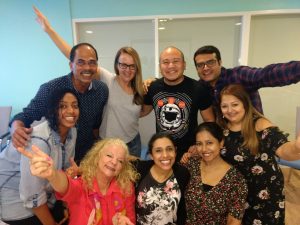Mastering the Art of Corporate and NLP Training: A Guide to Success

The field of training is vast – almost infinite – and trainers are numerous. Soft-skill trainers and corporate trainers function as educators or instructors in a business environment, imparting knowledge to a group of employees to enhance their abilities, promote growth, and improve achievements. Corporate trainers have become invaluable assets for startups as well as large, established companies that invest in training sessions, subsequently reaping the benefits of enhanced productivity. The domain of open/public training is also on the rise, with many individuals deciding to become trainers and quickly transitioning into the role.
What attributes must a trainer possess to qualify for the job? What capabilities are necessary to stand out and excel in this field? Merely standing up and sharing knowledge is no longer sufficient. The requirements for this profession encompass a range of aptitudes and abilities – some of which may be inherent, while most need to be acquired and honed.
In this context, we are dealing with a body of knowledge that needs to be effectively transmitted. The abilities of training and exercise design are incremental, enabling the presentation of content in an engaging, lively, and accelerated manner. The organization of content and the ability to deconstruct a topic into comprehensible segments, followed by a section that imparts knowledge in a manner allowing learners to immediately reproduce that knowledge, is more a learned technique than an innate talent.
Individuals interested in becoming trainers generally already possess strong connection and engagement abilities. The capacity to establish and maintain rapport with every student consistently is of paramount importance and forms the foundation of effective training. An outdated approach involves trainers attempting to display authority or showcasing their power. What has emerged as a guiding principle in the training field is a trainer’s ability to build and sustain rapport with individuals and the larger audience, gauged through feedback. A trainer with adept connection and engagement abilities will receive positive feedback, with people expressing their liking for the trainer and their compelling delivery.
This demands a certain level of personability, involving the expression of a heart-centered approach and a particular radiance or charisma that allows the trainer to easily and powerfully connect with each and every individual, irrespective of existing rapport. It’s almost an automatic or natural engagement ability that is required. While some trainers naturally possess this ability, others need to work on and enhance this critical asset to be successful and impactful as trainers.
Creating an atmosphere of trust, safety, and unity is essential. The notion of needing to assert authority, elevating oneself in any manner, or believing that a trainer must be positioned as “above” the learners is outdated and can come across as inauthentic. A trainer establishes rapport with the audience from the outset, demonstrating through their demeanor, speech, and actions that they are a friend and equal, fostering an environment of trust, harmony, and safety.
Several abilities are imperative for someone aiming to become a trainer: effective articulation skills – the ability to convey information in a manner that others understand; advanced language and speaking skills – which cultivate trust and engagement with individuals and audiences; and the refinement of metaphor, parable, anecdote, and storytelling abilities – encompassing compelling openings and closings, as well as the use of “looping skills” that optimize engagement with learners’ subconscious minds, fostering successful adaptation and memory retention of new content or topics. A trainer’s responsibility is to ensure there are no dull moments during a training session.
The language employed in high-quality training sessions adheres to patterns that ensure organized, sequential thinking and speaking. Each segment begins and concludes as a cohesive unit, seamlessly transitioning to the next. The art of framing and titling is crucial for excellence in this field. A trainer either possesses or must acquire a structured and procedural approach to presenting learnings.
Expectations for a trainer’s performance today continue to escalate. Humor, entertainment, animation, and the ability to utilize the entire stage and one’s body to engage listeners are fundamental abilities. Speakers passionate about training often gravitate toward this field, bringing with them a degree of animation and engagement. However, this ability is perpetually evolving and can always be further refined.
Optimal learning acceleration occurs when all sensory channels are engaged. Visual, auditory, kinesthetic, and other sensory modalities play a pivotal role. The trainer’s skill in leveraging their body to convey holistic learning, coupled with their ability to incorporate movement rather than remaining stationary throughout the learning session, are critical. Effectively activating various channels of sensory adaptation contributes to fostering enthusiastic and engaged states of learning. Consequently, the creation of heightened states of mind and the application of accelerated learning techniques are pivotal for an engaging training environment and the cultivation of lasting memory.
In conclusion, the initial questions – what attributes must a trainer possess to qualify for the job, and what capabilities are necessary to stand out and excel in the field – have been addressed. While certain abilities are prerequisites, many others can be learned and cultivated. As someone who has dedicated a professional lifetime to teaching and training trainers, I can attest that this field is truly boundless, and I encourage everyone to remain open to continuous learning.
Dr. A. Doris Greenwood, author and Meta Master Trainer, specializes in training trainers to excel in their profession. She offers Corporate and NLP Trainer Training, certifying individuals in all levels of NLP and Emotional Intelligence.




